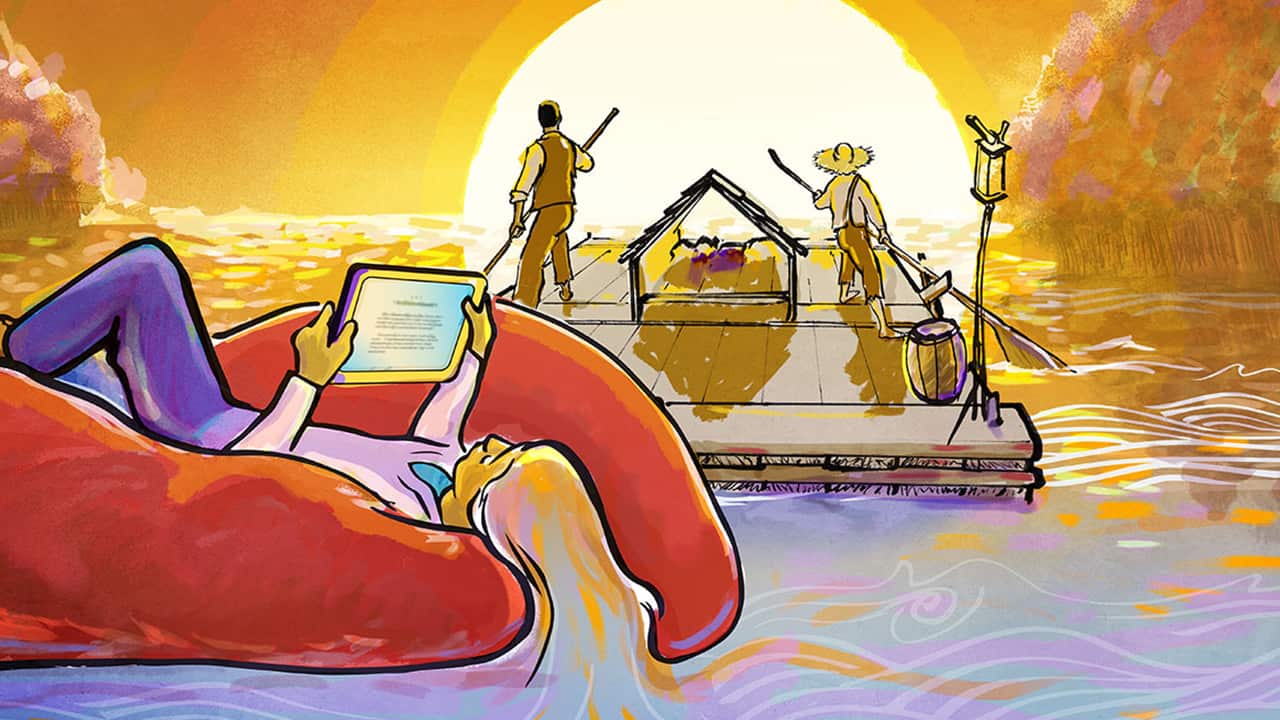As you may know, students become more concerned with the social rather than the academic aspects of school as they advance through middle school. To follow social norms, students typically show a certain level of apathy toward their lessons in class. Everyone wants to fit in, so getting them involved in a lesson can be a bit of a high-wire balancing act.
Creatively engaging your students
When it came to teaching inferencing, I knew I would have to be creative to overcome the “too cool for school” attitude. I did this by creating a “crime scene” in the room: In the front of my room, I left a pillow, an empty popcorn bowl, a DVD cover, and some other items.
After my students were seated, I asked if anyone wanted to claim any of the items that I found that day. They all looked at me like I was crazy! No, those items didn’t belong to anyone here! Why would anyone bring a popcorn bowl like that to school? I said, “I’m not sure. What do you think happened here, then?” Different ideas were suggested. I wrote them down on the board and asked questions like, “Is that likely based on the evidence we have?” and, “Does the evidence support that idea?” Finally, we concluded that the custodian had a break or possibly a sleepover party for one in the classroom and left the items behind.
Three-step process for inferencing
I explained to them that what they had just done was to use their inferencing skill. They came to a logical conclusion based on reasoning and evidence. We used a three-step process to do this:
- Ask questions
- Locate evidence that could answer the questions
- Make a conclusion based on evidence and reasoning
This is an important skill for reading and many other content areas. Students make inferences with science experiments to analyze their results, in social studies to understand various civilizations’ origins, and, of course, as part of a literature study when analyzing texts. In fact, most novels do not come right out and tell readers specific things about the characters. Instead, a lot of information must be inferred.
Applying the inferencing skill when studying literature
Working with an example from The Outsiders, we were ready to try my three-step process by discussing the situation between Sandy and Sodapop. We knew that Sandy was dating Soda but then was sent away to live with her grandparents. We found out later that “When Sandy went to Florida”¦it wasn’t Soda, Ponyboy. He told me he loved her, but I guess she didn’t love him like he thought she did, because it wasn’t him.”
Here we had to be the detectives all over again. This time I provided an outline and had the students ask (and record) their questions. They came up with ones like “What does it mean when it says ”˜it wasn’t him’?” and “What does love have to do with it?”
Students worked with partners to discuss the questions, think about possible answers, and find evidence to support those answers. Then we shared our information. Putting all the ideas together, we were able to determine what the quote meant.
Here is one example:
| Question | What does the text mean when it says “it wasn’t him”? |
| Evidence | “He wanted to marry her anyway, but she just left.” (p.174) |
| Inference | Sandy was involved with another boy. |
Set up independent inferencing with appropriate supports
Next, it was time for the students to complete an inference task on their own. Using the poem Nothing Gold Can Stay that was featured in The Outsiders, students wrote their own questions and tried to answer them. They had to provide evidence from the poem to back up their ideas. This could have been challenging for the students who were struggling, but I provided an audio version and an outline for the students to follow. This outline took up permanent residence on our wall as an anchor chart to help students remember how to use these skills in the future.
The next time my students need to use their inferencing skills to analyze text, I can remind them to follow the process like they did when we “discovered” the custodian’s items in the classroom and examined The Outsiders. Those memory cues combined with our anchor chart and outline should help them experience more success with inferences in future literature studies and other content areas.



